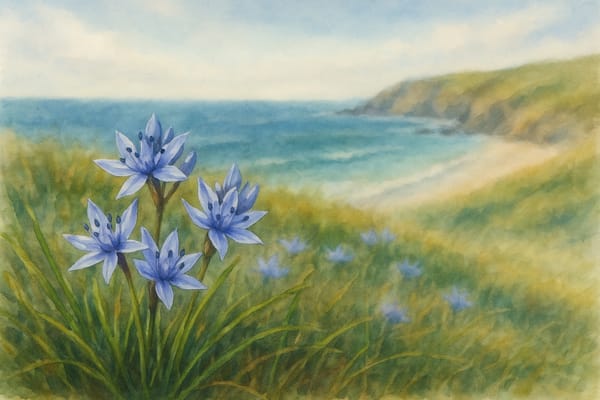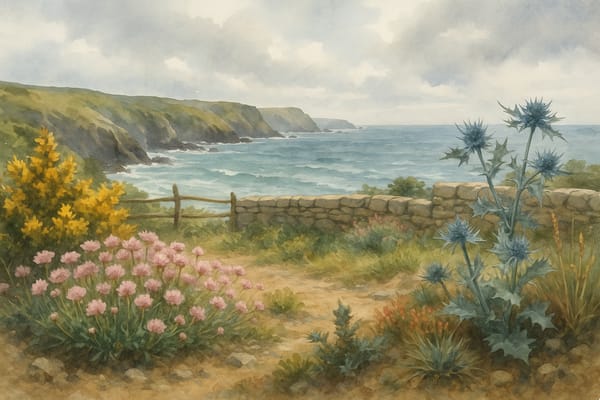Each spring, Cornwall’s cliff-tops are illuminated with the intense blue of Spring Squill — a low-growing, resilient wildflower that has quietly claimed its place as the county’s floral emblem. Native to Britain’s western coasts, and especially prolific on Cornish headlands, this modest plant has become a powerful symbol of place, season, and botanical heritage.
A Symbol of Cornwall’s Natural Identity
Spring Squill is more than a beautiful springtime bloom — it’s officially recognised as the subnational flower of Cornwall. Alongside icons like the Cornish chough and elm, Spring Squill represents the distinctiveness of Cornwall’s wild and enduring landscapes.
Its vivid blue flowers arrive in April and May, often carpeting headlands such as Ligger and Holywell in an ethereal, almost surreal glow. The massed displays are eagerly anticipated each year by locals and visitors alike, marking the arrival of spring and the start of another cycle in the coastal calendar.
Though not heavily featured in ancient folklore, the plant’s presence in conservation efforts, regional nature writing, and botanical lists highlights its place in Cornwall’s modern identity. In this way, it bridges a quiet reverence for the land with a pride in its living heritage.
Botanical Resilience: A Perfect Fit for Coastal Gardens
Adapted to thrive in salty winds, shallow soils, and exposed cliffs, Spring Squill is a naturally hardy addition to coastal gardens. Its foliage is grass-like and unobtrusive outside of flowering season, making it an excellent companion for other low-growing wildflowers and natives.
Best Conditions:
| Aspect | Recommendation |
|---|
| Sunlight | Full sun to partial shade |
| Soil | Well-drained; sandy, gritty, or rocky |
| Exposure | Tolerates wind, salt spray, and exposed headlands |
| Moisture | Prefers dry to moderately moist; dislikes waterlogging |
| Hardiness | Very hardy; perennial, flowering April–May |
Growing Tips:
- Plant bulbs in autumn, 2–3 times their depth in well-drained soil. Excellent for gravel gardens, rockeries, or naturalising in short turf.
- Sow seed in late summer or autumn for a longer propagation cycle; seedlings may take several years to flower.
- Divide bulbs after flowering to gently expand your patch over time.
- Avoid collecting from the wild — source from trusted suppliers to support conservation.
Spring Squill is ideal for low-maintenance, ecologically thoughtful gardens, especially in exposed or nutrient-poor locations where other plants may struggle. Once established, it requires almost no care, and its early blooms offer a welcome food source for pollinators emerging in spring.
A Flower of Geological Heritage
The habitats where Spring Squill thrives are shaped by Cornwall’s geological history — from granite headlands and Devonian slate cliffs to serpentine outcrops on the Lizard Peninsula. These rugged, nutrient-poor sites favour hardy flora, and the Spring Squill has evolved to flourish in their thin soils and relentless exposure.
Its preference for open, windswept terrain not only makes it a beautiful spring feature, but also a living witness to the forces — both geological and climatic — that have shaped Cornwall’s wildest places.











